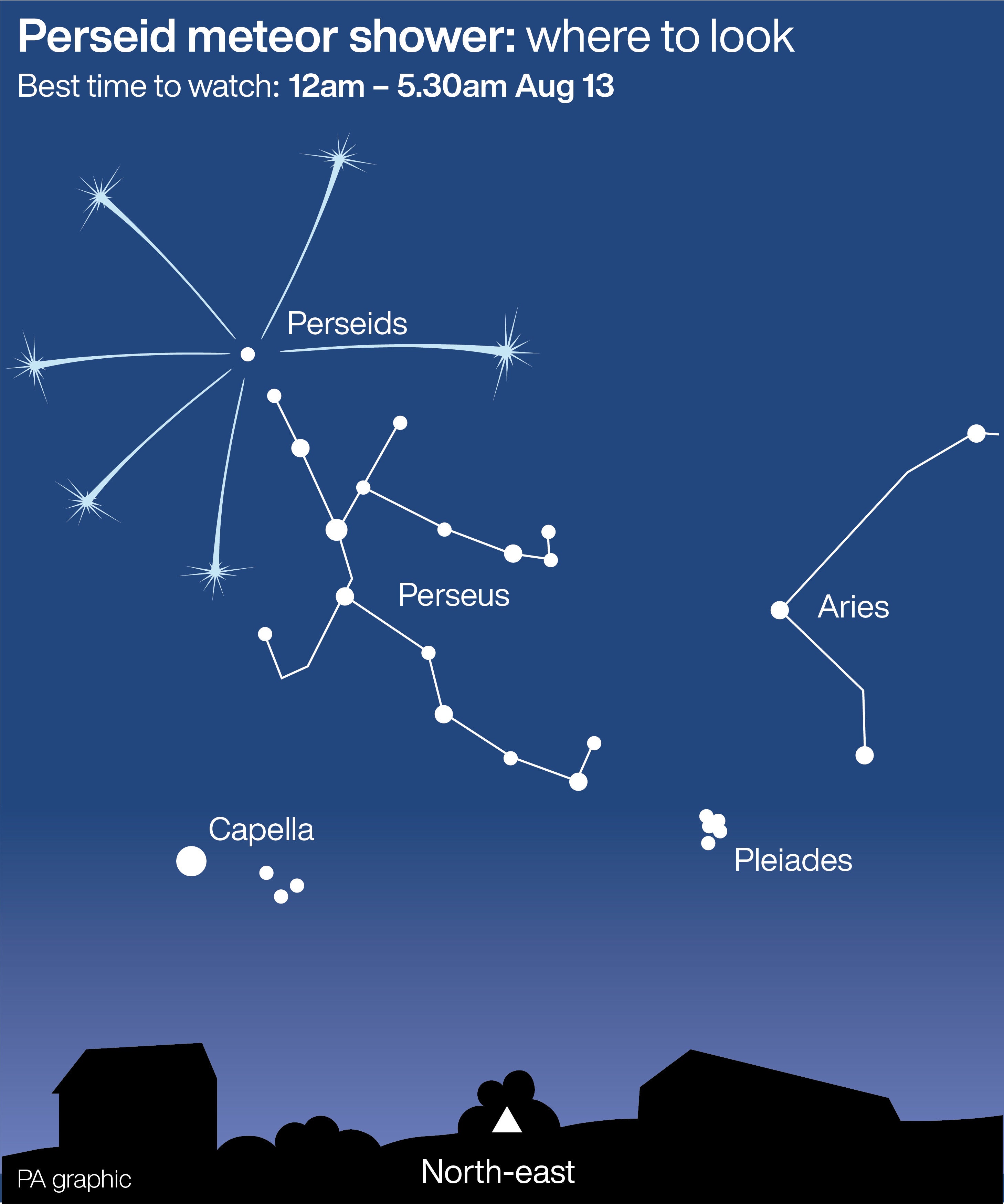The world gets its last chance to see the peak of the Perseid meteor shower tonight, as the celestial spectacle begins at sunset.
Stargazers can observe up to 100 meteors per hour. This is considered the most beautiful meteor shower of the year.
This happens when the Earth flies through a cloud of dust from comets. The dust collides with the atmosphere, lights up, and leaves a trail that can be observed in the sky.
The shower should be visible from around sunset on Monday until the early hours of Tuesday, but the best time will be from midnight onwards.

The event is related to the dusty remains of the comet Swift-Tuttle, which orbits the sun once every 133 years.
The comet’s meteoroids, which are usually no larger than a grain of sand, burn up when they hit the Earth’s atmosphere at 58 kilometers per second, creating a flash of light in the sky.
Jess Lee, astronomy education officer at the Royal Observatory Greenwich, said: “This shower is known for a particularly high number of meteors (up to 100 per hour if you’re lucky) and particularly bright meteors.”
“This year, due to the current phase of the moon, the sky should be dark enough for many shooting stars to be visible.”
She added that the shower would be best viewed from areas where the sky was clear and there was no light pollution.
Ms Lee said: “If you want to watch meteors, go outside after midnight, as far away from street lights as possible and, if possible, in an area where you can see the sky well.
“Then all you have to do is make yourself comfortable, look up and wait.”
The Perseids are named after the constellation Perseus because if you trace the meteors back in the sky, it appears as if they come from this area.
Additional reporting by agencies




